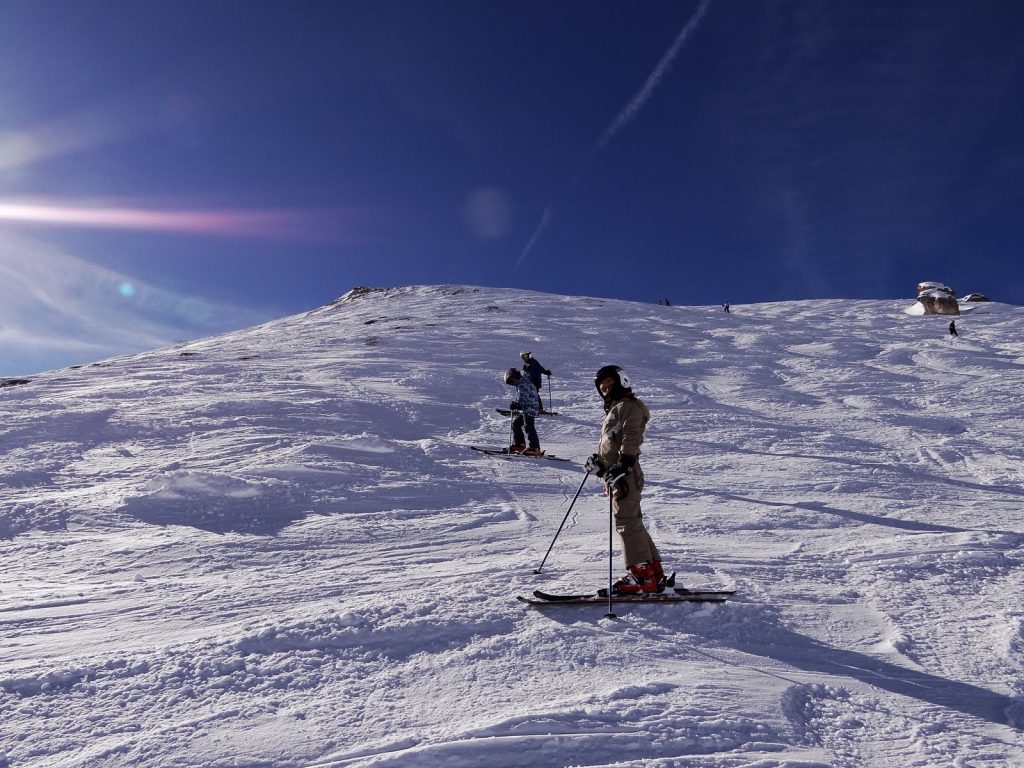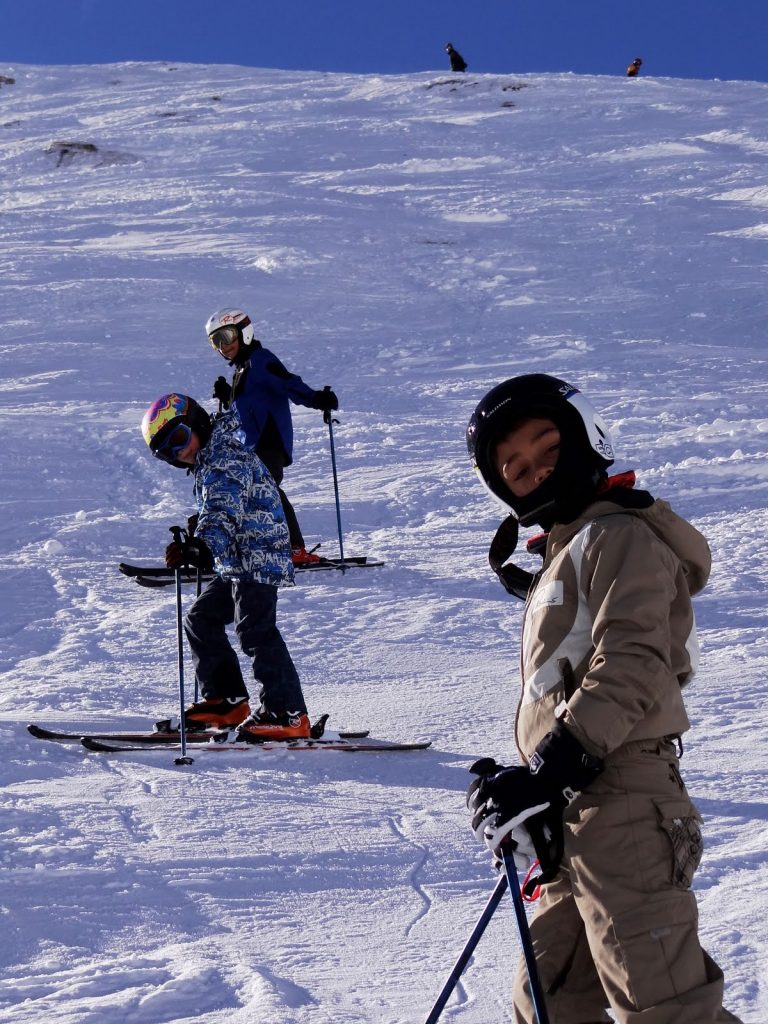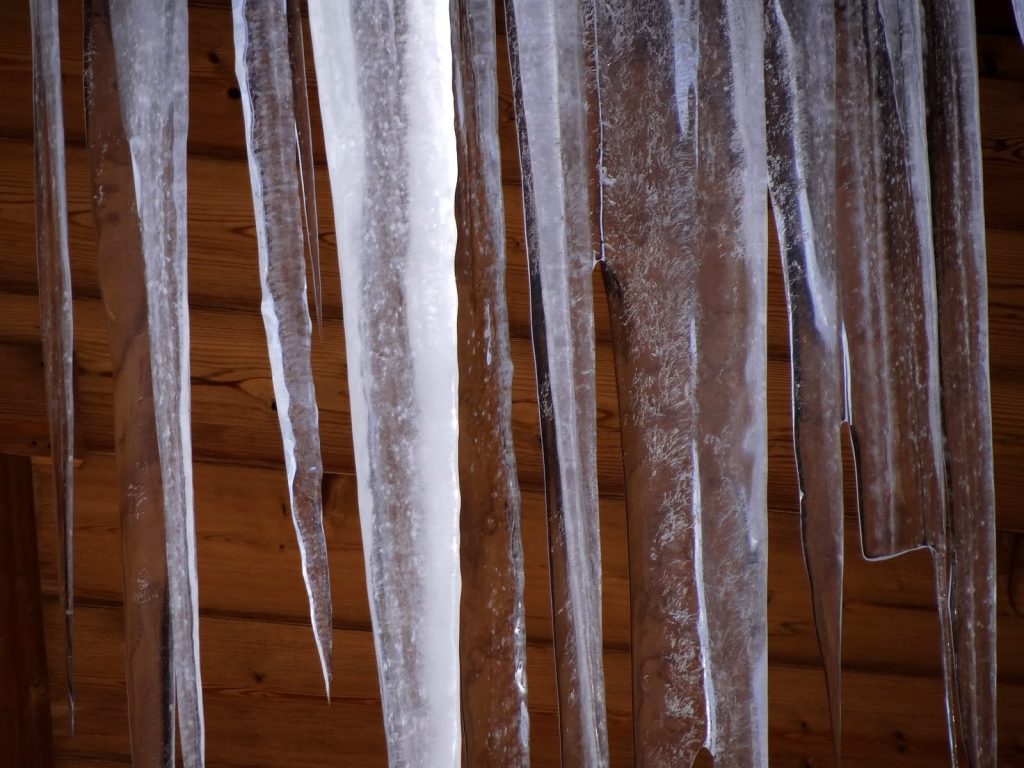Alex, Tariq, JJ
Slalom
The day began with a warm up run through the half pipe and then straight over to the slalom while it was both empty and in good condition. Tariq didn’t really want to do slalom after the hard conditions yesterday but I persuaded him to have one run because I was sure he would beat his previous best time – and he did – reducing it to 38.87 seconds from 39.31. He was very happy to see the improved time. If we had continued there he would have improved even more but because the other boys were not ready for slalom we stopped after the single run. Today was the last day they would be skiing so they needed to really be putting to good use all they had been learning and not spending time doing exercises.
The day began with a warm up run through the half pipe and then straight over to the slalom while it was both empty and in good condition. Tariq didn’t really want to do slalom after the hard conditions yesterday but I persuaded him to have one run because I was sure he would beat his previous best time – and he did – reducing it to 38.87 seconds from 39.31. He was very happy to see the improved time. If we had continued there he would have improved even more but because the other boys were not ready for slalom we stopped after the single run. Today was the last day they would be skiing so they needed to really be putting to good use all they had been learning and not spending time doing exercises.
Bumps
After the slalom we had a good ski down the larger half pipe at the side of the Vert piste and then went up the Tommeuse chairlift and onto the big bumps on the Val d’isère side of the Tovière. The idea of the bumps was to develop the pivot. Tariq had already worked once on bumps and had learned well so he was quite comfortable – managing to keep his skis close together below his body on the mountain and pivot well. For JJ and Alex this was new and predictably difficult. I demonstrated how the tips and tails of the skis were in the air so the ski could pivot more easily than usual, but explained that it is scary pulling the skis in beneath your body as you slide down the bump – your instinct tells to to push them away instead. You have to work to train yourself to do the opposite from your defensive instincts.
Off Piste
After the bumps we proceeded onto a long off-piste excursion. JJ – who was still sick and had now missed two days was hanging in there. This was a long and proper off-piste trail but with absolutely no avalanche risk. The snow however was varied and sometimes quite deep – but by using their dynamics and “feet forward” techniques the boys managed without any trouble, including negotiating the trees and some steep traverses.
Carving
 After the hot chocolate break I decided to make things easier for the final part of the morning and to teach a little carving and higher speed skiing. Saturday is changeover day so the wide and gentle pistes of the Grand Pré were empty and perfect for learning to carve and go faster. We started simply with rolling the feet and making double edged traverses across the slope in both directions. The aim was to hold both skis on the edge and “rail” them without allowing any sideways slipping. Once on the flattest part the skis were pointed downhill instead and linked turns were made. This has to be done at first on very flat ground so that there are no problems with rolling from one set of edges to the other. Once this skill is mastered then it becomes the basis of modern racing technique. We used the slightly steeper slopes lower down to ramp up the speed and the boys really liked this.
After the hot chocolate break I decided to make things easier for the final part of the morning and to teach a little carving and higher speed skiing. Saturday is changeover day so the wide and gentle pistes of the Grand Pré were empty and perfect for learning to carve and go faster. We started simply with rolling the feet and making double edged traverses across the slope in both directions. The aim was to hold both skis on the edge and “rail” them without allowing any sideways slipping. Once on the flattest part the skis were pointed downhill instead and linked turns were made. This has to be done at first on very flat ground so that there are no problems with rolling from one set of edges to the other. Once this skill is mastered then it becomes the basis of modern racing technique. We used the slightly steeper slopes lower down to ramp up the speed and the boys really liked this.
The final run down Santons was really nice because the snow was in excellent condition and there were hardly any people. Alex remained close to my ski tails all the way down but we were able to go a bit faster than yesterday and without stopping all the way (except for a moment when Tariq dropped a pole. Tariq and Alex had both really improved during the week and JJ did well to hang in there at the end not slowing things down one bit for the others. JJ had a good go at the carving exercises and was definitely picking up on some technical stuff despite all his troubles with illness this week.
Joydip
Joydip had (predictably) managed to extrapolate his previous coaching into a form of Kamikazi plunge down the nursery slopes into a large “do or die” stopping turn at the bottom. This is what often happens when coaching is not continuous at this very early stage. Every day you see individuals of all ages bombing straight down the nursery slope and crashing into something at the bottom. The only thing they all have is common is the absence of any responsible coach. Joydip however was clearly making the basic dynamics work and was enjoying that – at least when he didn’t wipe out.
Pivoting
I decided it was time to teach Joydip about “pivoting” from the uphill edge of his turning ski. I physically supported Joydip though several pivots so that he could begin to develop a feel for it – then supported him skiing with the pivoting by physically manipulating him into each turn as he held onto a pole. We went up higher on the village chair and I physically supported him sidesipping down the steep part so that he could develop the feel of having both skis on the uphill edges and bringing them close together parallel. The exercise was all about learning edge awareness and control – plus getting used to sideways motion. Gradually Joydip also became more aware of which leg he had to stand on while generating dynamics and that being on the inside edge of a supporting ski during a turn was sometimes simply not desirable at the start of the turn. This is really a function of how much forward speed you have. If there is no forward speed – just a sideslip – then the turn begins from the uphill edge and the ski will not change edge until pointing straight downhill. Joydip was making rapid progress and had his turns more or less under control by the end – especially when adding the “push forwards” with the outside foot in the turn – plus he was thinking about the whole process differently. Pushing the outside foot forwards tends to increase the pressure beneath the foot as the ski tightens the turn – so this enhances the dynamics without having to resort to “transferring weight” to the outside leg by moving the wrong way with the body.



